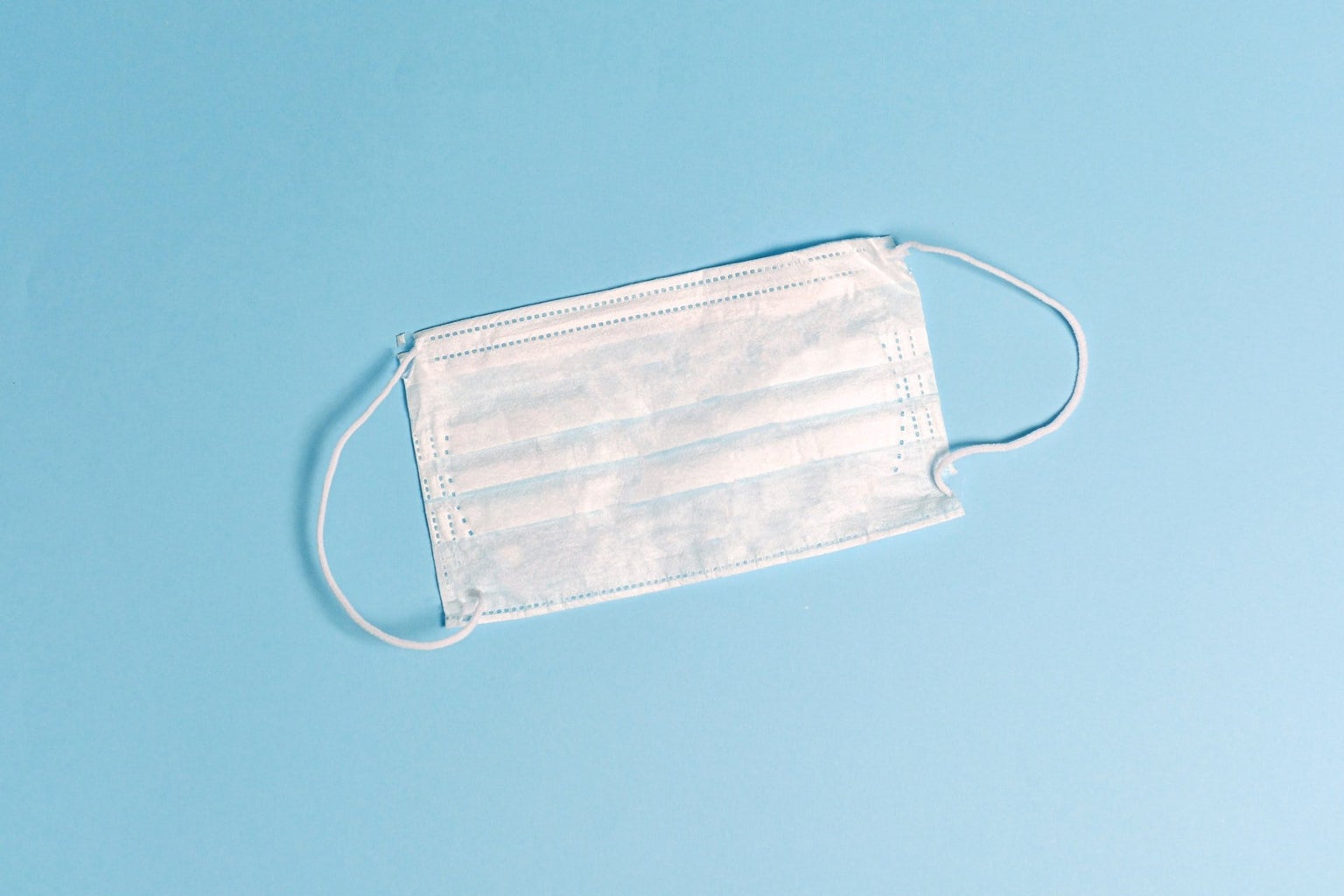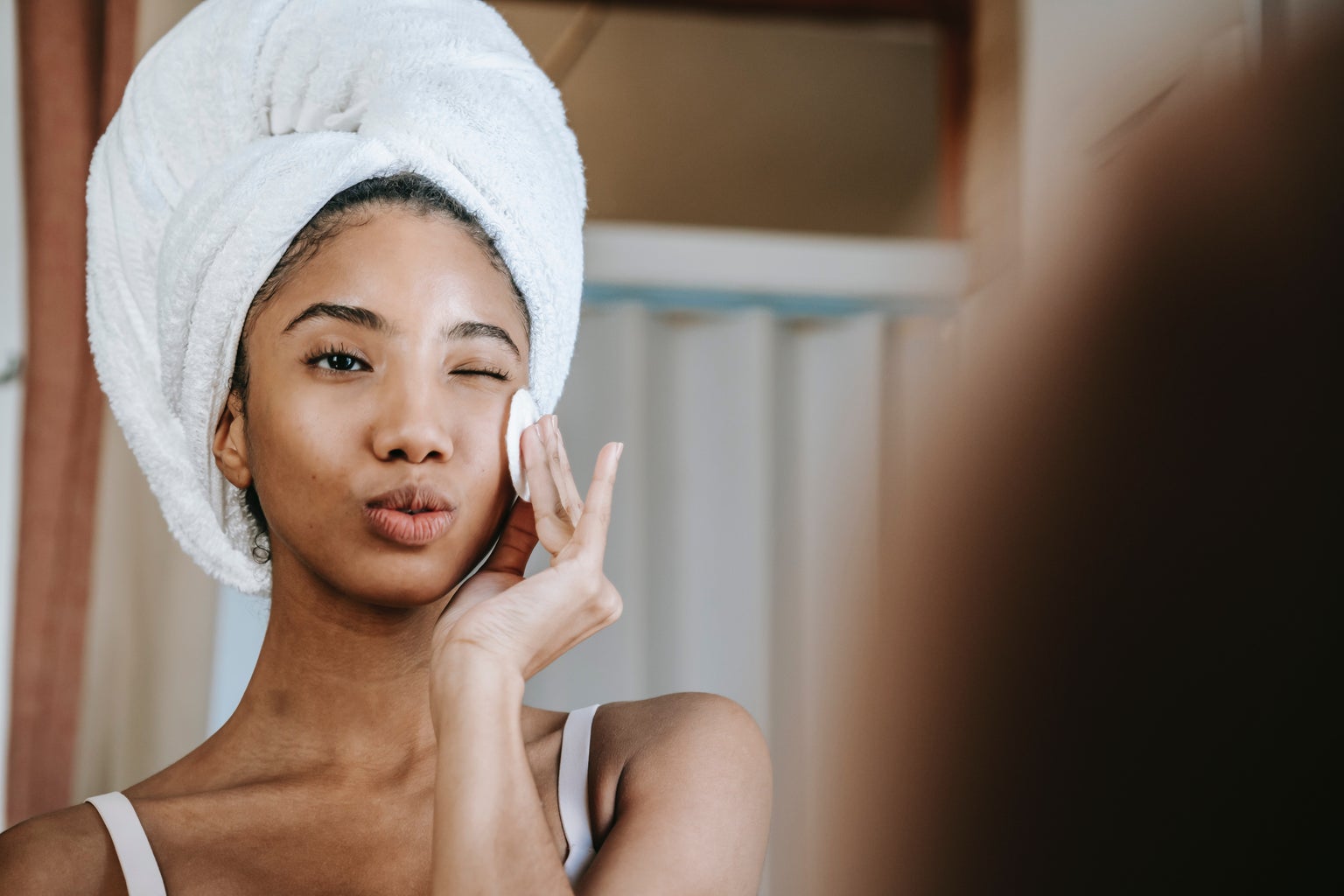The Her Campus National Editors write about products we love and think you’ll love too. Her Campus has affiliate partnerships, so we get a share of the revenue from your purchase. All products are in stock and all prices are accurate as of publication.
After half of a semester wearing a facemask every day, my usually under-control combination skin became a battlefield of broken barriers and bacterial acne. Many of us find ourselves wearing a mask on campus for more than several hours per school day. However, wearing a face mask can sometimes mess up your skin because facial covers create a moist and closed-up environment that fosters bacteria and encourages breakouts. Prolonged face mask-wearing can also cause skin irritation to your nose bridge. It’s essential to adjust your skincare routine appropriately to accommodate your new daily face mask-wearing. After I slowly nurtured my largest organ back to health, I collected some tips to share with you.
Find The Right Mask
N95 respirators are essential to healthcare workers, but not necessary for people in the medium to the low-risk environment. N95 fits very tightly and can cause skin tissue damage over a prolonged period of wear. It’s important to find a mask that fits your nose and chin comfortably. If your mask is too tight, it might irritate your nose bridge; if it’s too loose, it might slide down too much when you talk.
The material of the mask matters too. If you have sensitive skin or are prone to acne, you might want to find a mask made of hypoallergenic materials like cotton, such as these Kit-sch dusty rose cotton face masks. Another popular material for face masks is silk. Silk is accommodating to delicate and dry skin because it decreases the friction between your mask and face and does not absorb moisture from your skin. If this sounds like what you need, check out these 100% mulberry silk face masks by Blissy.
The most sustainable way to find your perfect mask is to make one from a piece of clothes that you plan to donate or throw out. Make sure the fabric is comfortable, like cotton or linen from your old PJs, and that you take accurate measurements. You can make a couple of masks out of the same shirt to gift your friend or family! Here is a tutorial on how to make a face mask at home in 5 minutes.
No matter which reusable mask you choose, you should always wash them regularly. Keep them clean daily and use soap specifically made for sensitive skin without fragrance.
Cleanse & Exfoliation
It’s important to keep your skin clean before and after wearing masks. Consider a pH-balanced and non-comedogenic cleanser to remove dirt, oil, and bacteria from your skin, like this Glossier milk jelly cleanser. If you wear makeup, you might want to consider an oiled based cleanser before your water-based cleanser to avoid clogging your pores. My favorite is the Green Clean makeup “Meltaway” cleansing balm by Farmacy. Clean your skin in the morning and immediately after you are done with wearing the mask. If you have sensitive skin, do not clean more than twice a day.
Exfoliation is essential because it gets rid of your dead skin cells to prevent breakout and blackheads. If wearing a mask is causing acne issues, try to exfoliate a little more often than you usually would. To avoid excessive abrasion, consider using a chemical exfoliator instead of a physical scrub. Chemical exfoliators like AHA (glycolic acid and lactic acid) or BHA are both great (salicylic acid). Follow with an exfoliating toner to target active acne or a hydrating one if you have dry skin.
Moisture & Protection
Moisturizing is critical when you are wearing a mask that’s slowly stripping moisture from your skin. Use a fragrance-free and non-comedogenic moisturizer that helps restore your skin’s natural barrier. Ingredients like ceramides and hyaluronic acid are great for that purpose, like the Cera Ve Moisturizing Cream. Apply the moisturizer when your skin is still damp. If your skin feels a little rough to touch, use an additional barrier cream on the top, such as Aquaphor or Vaseline. I’m personally a fan of sheet masks so I’d also recommend you incorporate a hydrating sheet mask in your routine at least twice a week. If you encounter any breaks or tears from wearing a face mask, use zinc oxide.
Even though you are wearing a mask, don’t forget to use sunscreen on your exposed skin! Sunscreen can protect against skin cancer, sun damage, and aging. If your sunscreen is water-resistant and oil-based, you might need an oil-based cleanser to remove it (for example, a makeup removing balm or cleansing oil) before your regular water-based facial cleanser.
It’s important to make necessary changes to your usual routine to accommodate your new daily habit of wearing a mask.





